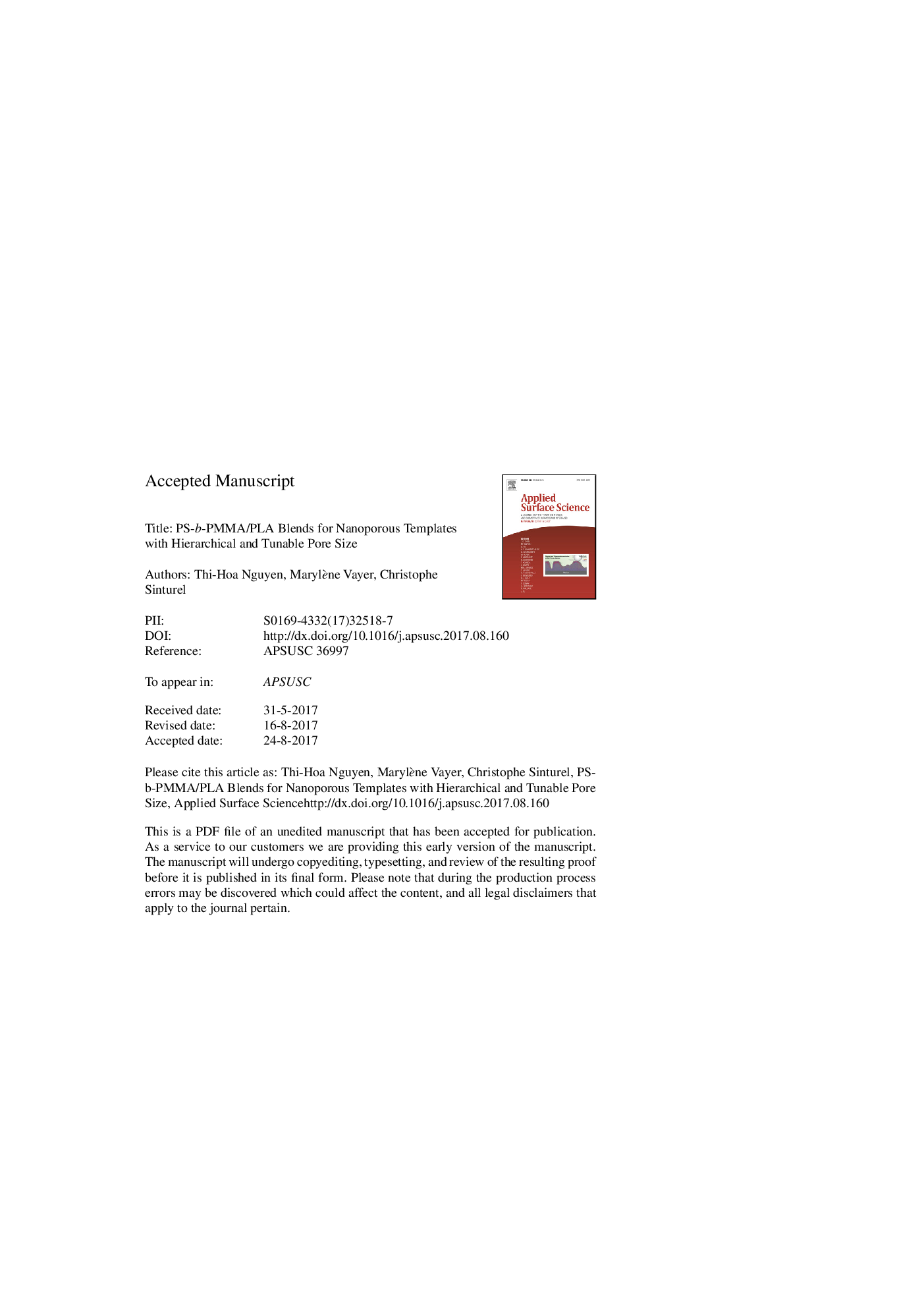| Article ID | Journal | Published Year | Pages | File Type |
|---|---|---|---|---|
| 5349251 | Applied Surface Science | 2018 | 24 Pages |
Abstract
Blends of poly(styrene)-block-poly(methyl methacrylate) (PS-b-PMMA) and poly(lactide) (PLA) were deposited in the form of thin films on the surface of modified silicon wafers and exposed to tetrahydrofuran (THF) vapor annealing. It was shown that in specific experimental conditions, a core-shell morphology consisting in cylinders with a PMMA shell and a PLA core, within a continuous matrix of PS, was formed. In this case, PLA naturally segregated in the core of the PMMA cylinders, minimizing the PS/PLA interaction, which constitutes the most incompatible pair (the interaction strength between the various components was confirmed in thin films of the corresponding polymer blends). Compared to other block copolymer/homopolymer blends described in the literature, this system exhibits unexpected high increase of the characteristic lengths of the system (center-to-center distance and diameter). This was attributed to a partial solubilization of the PLA in the PMMA corona (the two polymers are highly compatible), inducing an enhanced level of PS and PLA stretching caused by the strong repulsion between these two polymers. The selective extraction of the PLA yielded to porous domains with small dimensions (6 ± 2.5 nm), reaching the performances that are currently attained in highly incompatible block polymers with low molecular weight. Further PMMA removal revealed a second porosity level, with higher pores diameter and center-to-center distance compared to the neat PS-b-PMMA system. This work highlights how PS-b-PMMA, that currently represents one of the industrial standards nanoporous template precursors, can be modified in an easy and costless approach using PLA homopolymer addition.
Related Topics
Physical Sciences and Engineering
Chemistry
Physical and Theoretical Chemistry
Authors
Thi-Hoa Nguyen, Marylène Vayer, Christophe Sinturel,
